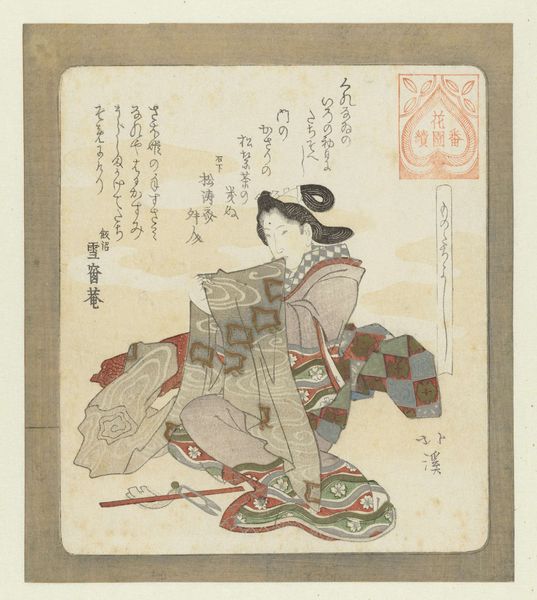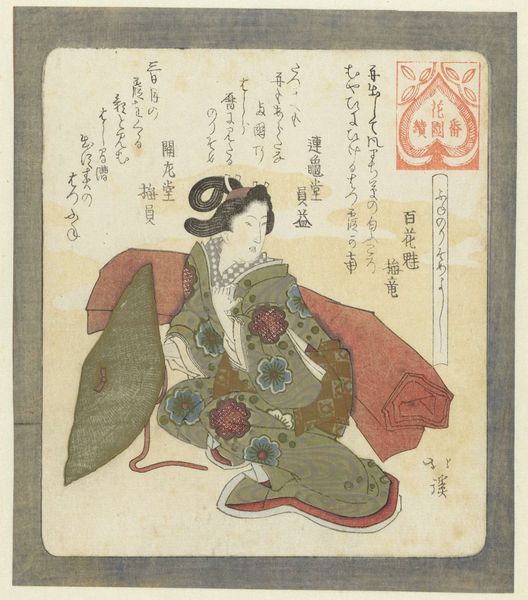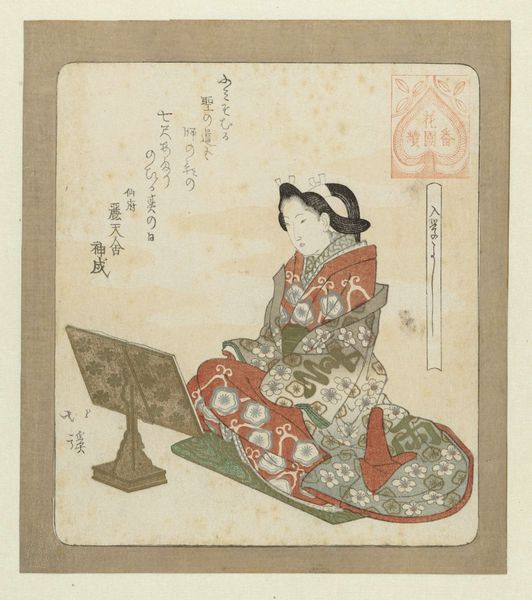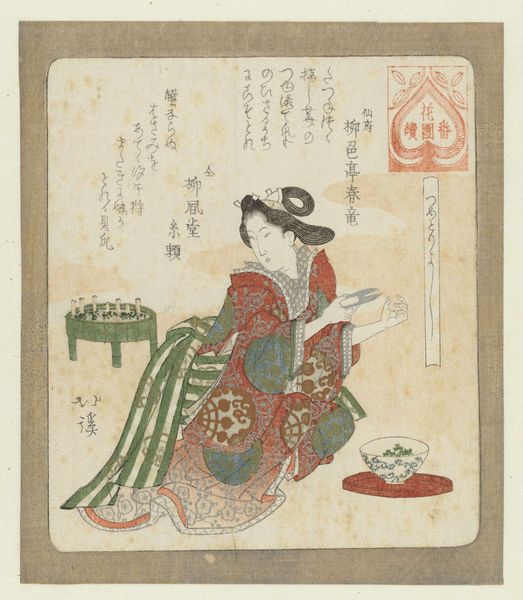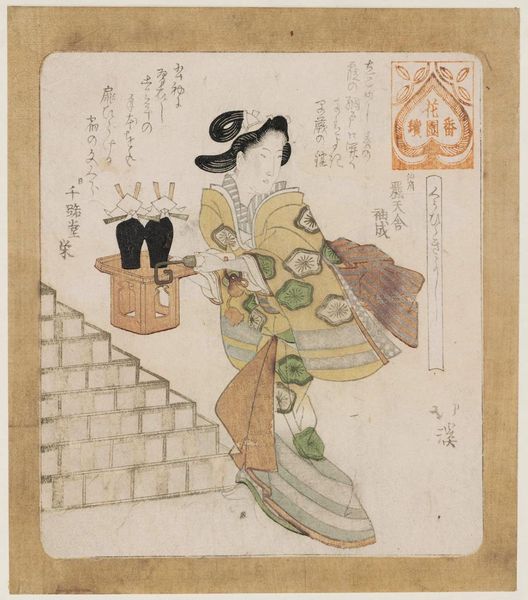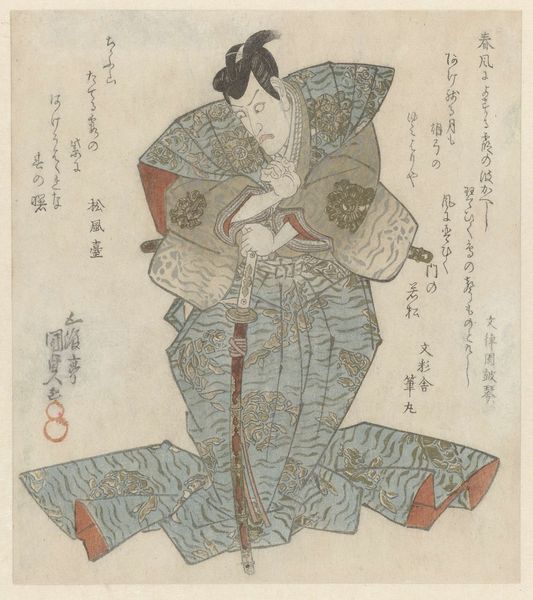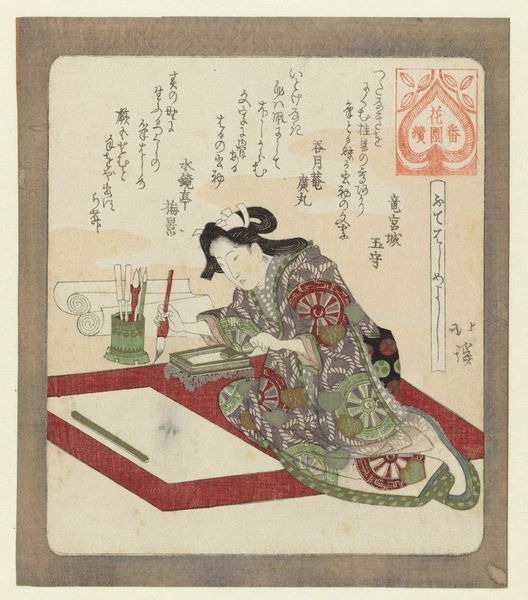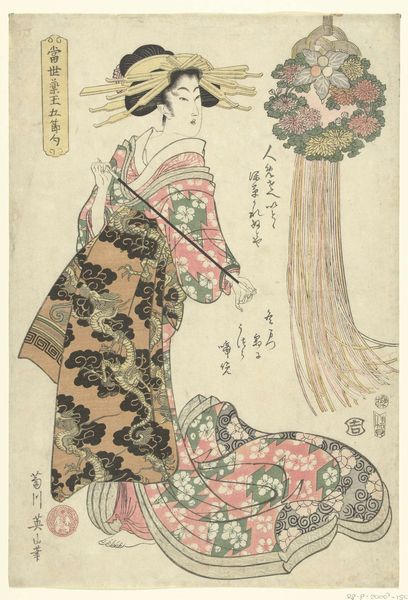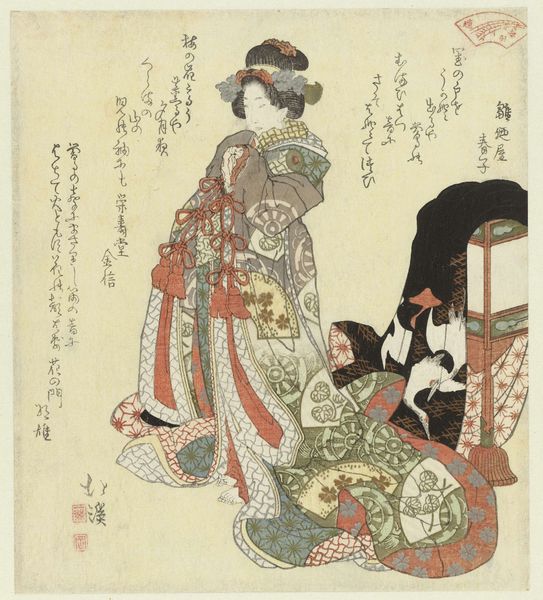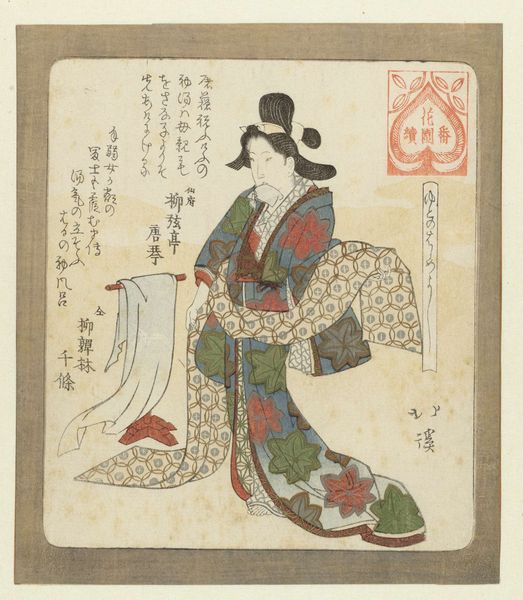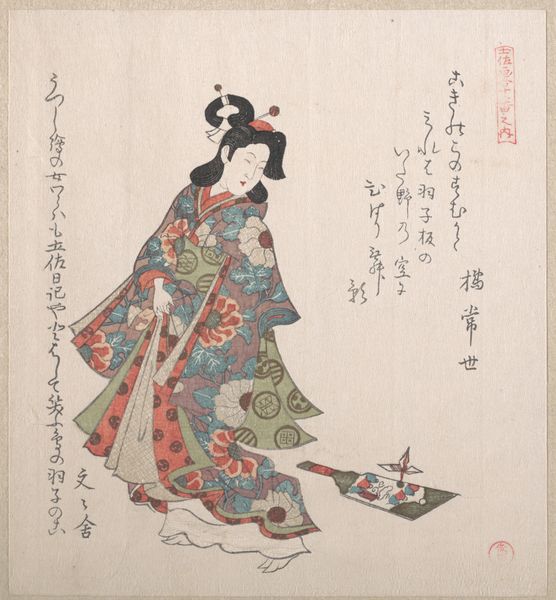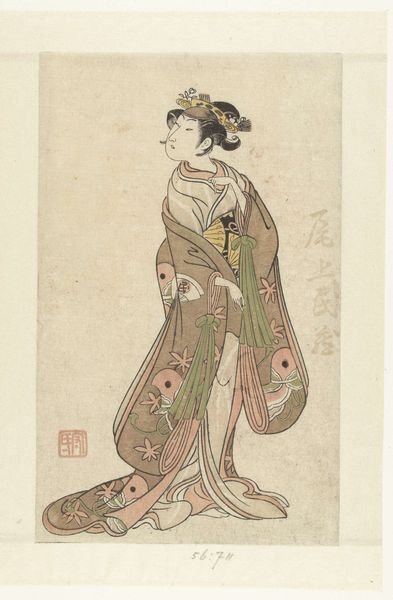
#
aged paper
#
toned paper
#
pastel soft colours
#
retro 'vintage design
#
curved letter used
#
historical fashion
#
watercolour bleed
#
watercolour illustration
#
cartoon carciture
#
watercolor
Dimensions: height 204 mm, width 177 mm
Copyright: Rijks Museum: Open Domain
Curator: Let’s consider Totoya Hokkei’s "Het is goed om nieuwe kleding te dragen," which translates to "It is good to wear new clothes", from around 1822. This work resides here at the Rijksmuseum. Editor: What strikes me immediately is the harmonious use of pastel hues; they lend the piece a gentle, almost ethereal quality. The composition, although simple, is meticulously balanced. Curator: This print emerges from a complex social landscape. The phrase "It is good to wear new clothes" isn't merely about fashion; it touches upon themes of identity and status. Hokkei, working within the Ukiyo-e tradition, often commented on contemporary society through his art. Consider that clothing functioned as an essential signifier within the rigid social hierarchies of Edo-period Japan. Editor: Precisely! The delicate watercolour technique, along with what appears to be carefully aged paper, provides a soft, almost dreamlike quality that contrasts nicely with the subject's very conscious display. Notice the detailing on the kimono. Curator: This particular image speaks volumes about the aspirations of the merchant class. Newly acquired wealth allowed them to emulate the styles of the aristocracy, but the print also perhaps playfully subverts that aspiration by exaggerating the finery. Who has access, and who wants access, informs this composition. Editor: Semiotically, the arrangement presents a study in contrasts. The flowing lines of the garment offset by its geometrical, repeating patterns... and a kind of tension that resolves itself at its base. The juxtaposition of organic shapes with structured design, as we see it repeated in Japanese woodblock printing of the era, is remarkable. Curator: The print encourages viewers to contemplate not only personal transformation but also the broader societal shifts occurring during this era. There is an unmistakable playfulness in Hokkei's work. His art consistently prompts discussions about self-expression and the negotiation of cultural norms. Editor: I see now the value of understanding the cultural narratives interwoven within its aesthetic appeal, allowing for a deeper appreciation. The historical and structural contexts give rise to meaning that would otherwise elude me.
Comments
No comments
Be the first to comment and join the conversation on the ultimate creative platform.
